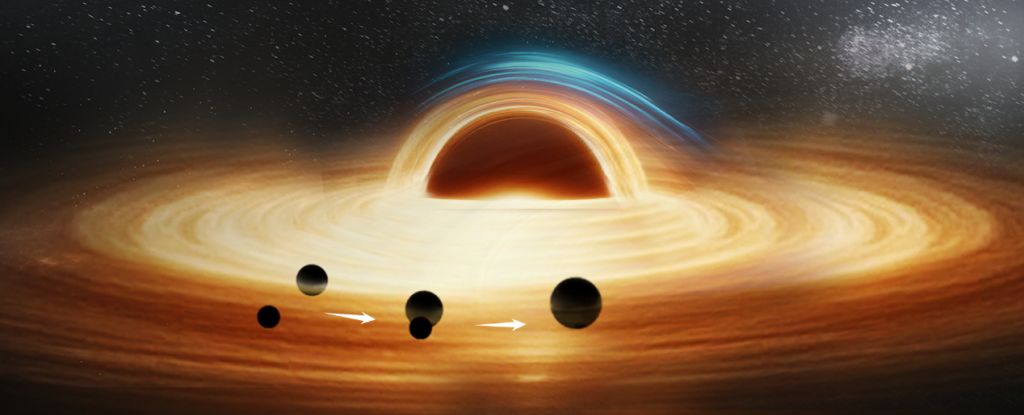
A recent analysis of data from the LIGO-Virgo-KAGRA collaboration indicates the potential first detection of a trinary black hole system. The findings suggest that a peculiar signal identified during a 2019 binary black hole merger may be linked to a third black hole, orbiting in a gravitational dance with two others. This revelation was highlighted by astronomer Wen-Biao Han from the Chinese Academy of Sciences, who stated, “This is the first international discovery of clear evidence for a third compact object in a binary black hole merger event.”
The research revolves around the gravitational wave event known as GW190814, which has garnered attention for its unusual mass ratio between the two merging black holes. One of these black holes is considered the smallest ever detected, with a mass of just 2.6 times that of the Sun, while the other weighs approximately 23 solar masses. This disparity challenges existing models of stellar evolution, which typically predict that binary black holes should be of similar size.
Implications for Gravitational Wave Research
The investigation, led by Shu-Cheng Yang, involved examining how the gravitational wave signals from GW190814 could indicate the presence of a third larger black hole. The researchers hypothesized that two smaller black holes orbiting a larger one would exhibit an extra acceleration along the line of sight due to their orbital motion.
The model developed by the team suggested a line-of-sight acceleration of 0.0015 times the speed of light, with a confidence level of around 90 percent. This supports the idea that black hole mergers might occur in more complex environments than previously understood, opening new avenues for research into black hole formation and merger dynamics.
Since the first detection of gravitational waves in 2015, scientists have identified around 300 mergers, which have enabled them to gather insights into the nature of black holes. The current findings regarding hierarchical mergers, where smaller black holes merge to form larger ones, could reshape the understanding of black hole evolution.
Future Observations and Research
The upcoming observing run of the LIGO-Virgo-KAGRA observatories promises to generate a wealth of new data that may further illuminate the environments in which black holes exist and interact. Researchers remain optimistic that this data might reveal additional complexities in black hole mergers and contribute to the growing understanding of these enigmatic cosmic phenomena.
The results of this study have been published in The Astrophysical Journal Letters, marking a significant milestone in the ongoing exploration of the universe’s most mysterious entities. As scientists develop new tools and methodologies, the potential for discovering more about black hole trinaries and their formation pathways remains promising.







